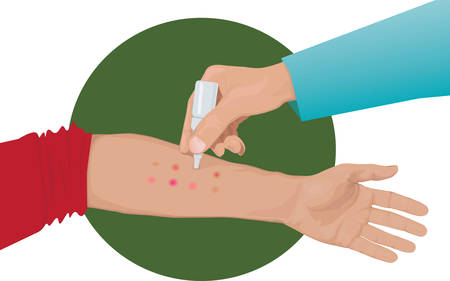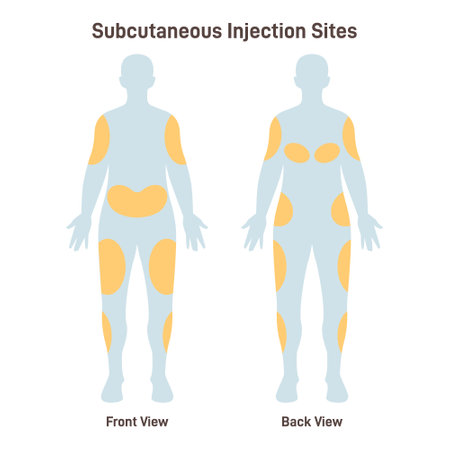Introduction to Paediatric Post-Injury Rehabilitation in the UK
In the United Kingdom, paediatric post-injury rehabilitation plays a pivotal role in supporting children’s physical, psychological, and social recovery following trauma. The NHS and its associated local trust frameworks strive to deliver comprehensive rehabilitation services tailored to the unique needs of young patients. However, these services operate within a complex system where demand often outstrips resources, and the journey from acute care to long-term rehabilitation is rarely straightforward. Navigating this process involves not only clinical expertise but also careful coordination between multidisciplinary teams, families, schools, and community agencies. Moreover, each region may interpret national guidelines differently according to local priorities and funding constraints. As such, evaluating the effectiveness of paediatric rehabilitation programmes requires an understanding of both the overarching NHS infrastructure and the nuanced realities faced by children and their families across diverse communities in the UK.
2. Setting Standards for Success in Rehabilitation Programmes
Establishing clear standards is fundamental to the effective measurement and evaluation of paediatric post-injury rehabilitation programmes within the UK. National standards and clinical guidelines not only define what constitutes successful rehabilitation, but also ensure that all children receive care aligned with best practice. The National Institute for Health and Care Excellence (NICE), along with NHS England and the British Society of Rehabilitation Medicine (BSRM), provide robust frameworks and recommendations for the delivery of paediatric rehabilitation following injury.
Examination of National Standards
In the UK, national standards for paediatric rehabilitation are designed to ensure consistency, safety, and quality of care across healthcare settings. These standards typically address areas such as multidisciplinary team involvement, goal setting, family-centred approaches, and timely access to services. Adherence to these benchmarks supports equitable outcomes for children regardless of their geographical location or background.
Key Clinical Guidelines
Clinical guidelines issued by NICE and professional bodies guide practitioners in assessing, treating, and monitoring children throughout their rehabilitation journey. These guidelines emphasise early intervention, collaborative care planning, regular progress reviews, and transition planning as young people move towards adult services. The table below highlights some pivotal standards and desired outcomes relevant to paediatric post-injury rehabilitation in the UK context:
| Standard/Guideline | Description | Desired Outcome |
|---|---|---|
| NICE Quality Standard QS63 | Defines best practice for rehabilitation after major trauma in children | Improved physical function, reduced complications |
| BSRM Standards (2019) | Multidisciplinary team assessment and regular review | Holistic recovery encompassing physical, cognitive, and psychosocial domains |
| NHS Paediatric Rehabilitation Pathways | Timely referral, early intervention, and coordinated discharge planning | Smooth transitions between care settings; family engagement |
Culturally Relevant Outcomes in the UK Context
The success of paediatric post-injury rehabilitation in the UK is also measured against outcomes that reflect societal values—such as inclusion in mainstream education, participation in community activities, and psychological wellbeing. Programmes are encouraged to tailor their goals to individual needs while aligning with these broader expectations. Ultimately, setting rigorous standards ensures that evaluation efforts focus on meaningful improvements in children’s lives rather than simply fulfilling process requirements.

3. Varying Measures of Success: Clinical, Functional, and Holistic Approaches
When assessing the success of paediatric post-injury rehabilitation programmes in the UK, it is essential to recognise that a single measure rarely captures the full spectrum of a child’s recovery. Instead, practitioners and commissioners increasingly employ a multifaceted approach, integrating clinical, functional, and holistic perspectives. This reflects both the NHS’s commitment to patient-centred care and the real-world complexity faced by children and their families during recovery.
Clinical Recovery: Quantifiable Outcomes
The most traditional approach is clinical measurement—using objective indicators such as range of motion, pain scores, wound healing, or neurological function. These metrics provide invaluable benchmarks for tracking progress over time. Standardised tools like the Paediatric Glasgow Outcome Scale or validated physical assessment protocols are widely adopted across UK settings. However, whilst these quantifiable outcomes can demonstrate progress at a biological level, they do not necessarily capture how well a child is reintegrating into their usual life or coping emotionally with their injury.
Functional Success: Returning to School and Everyday Life
For many British families, true success is demonstrated when a child returns to school and resumes daily activities. This involves measuring attendance rates post-rehabilitation, participation in sports or social clubs, and independence in self-care tasks. Tools such as the Functional Independence Measure for Children (WeeFIM) are sometimes used to objectively quantify improvements in mobility, communication, and social interaction. Local authorities and NHS trusts often collaborate with schools to monitor these outcomes and ensure that support plans remain relevant as children transition back into educational settings.
Psychological Wellbeing: Beyond the Physical
The psychological impact of an injury can be significant—yet is sometimes overlooked in favour of physical milestones. UK best practice now recognises the importance of monitoring mental health through regular screening for anxiety, depression, or post-traumatic stress using age-appropriate questionnaires. Incorporating clinical psychology within multidisciplinary teams allows for early intervention where needed. Feedback from young people themselves is also sought through surveys or semi-structured interviews, ensuring their voices shape ongoing care.
Family Involvement: A Key Determinant of Long-Term Success
No paediatric rehabilitation journey occurs in isolation; family involvement is crucial. Many UK services use structured interviews or satisfaction surveys to gauge parental confidence in managing care at home and understanding rehabilitation goals. Some trusts have piloted family workshops to empower carers with practical skills and emotional support networks. Measuring success here means tracking not just the child’s outcomes but also family resilience and engagement with follow-up services.
A Balanced Assessment
Ultimately, evaluating the effectiveness of paediatric post-injury rehabilitation in Britain requires balancing these diverse measures—clinical data provides rigour; functional assessments reflect real-life adaptation; psychological markers highlight hidden struggles; and family feedback ensures sustainability. Only by adopting this holistic lens can we truly understand what ‘success’ means for children recovering from injury across the UK.
4. Tools and Methods for Monitoring Progress
The success of paediatric post-injury rehabilitation programmes in the UK is closely linked to the consistent use of robust monitoring tools and methods. Healthcare professionals rely on a combination of standardised assessment instruments, patient-reported outcome measures (PROMs), and systematic data collection techniques to gain a comprehensive understanding of each child’s recovery journey.
Standardised Assessment Tools
Standardised tools provide objective metrics for assessing functional ability, physical progress, and psychosocial wellbeing. In the UK, several validated instruments are widely used across NHS trusts and specialist rehabilitation centres. The following table summarises some key assessment tools:
| Assessment Tool | Purpose | Typical Use in Paediatrics |
|---|---|---|
| Pediatric Evaluation of Disability Inventory (PEDI) | Measures functional capabilities and performance in daily activities | Tracking changes in self-care, mobility, and social function after injury |
| Gross Motor Function Measure (GMFM) | Evaluates changes in gross motor skills over time | Commonly used for children with acquired brain injuries or orthopaedic trauma |
| Goal Attainment Scaling (GAS) | Individualised goal-setting and measurement framework | Captures personalised outcomes that matter to children and families |
| Children’s Occupational Performance Measure (COPM) | Assesses perceived performance and satisfaction in everyday tasks | Useful for collaborative care planning with children and carers |
Patient-Reported Outcome Measures (PROMs)
PROMs offer valuable insights into how children and their families perceive progress, quality of life, pain levels, emotional wellbeing, and participation in daily activities. Widely adopted PROMs within the UK context include the Paediatric Quality of Life Inventory (PedsQL) and EQ-5D-Y. These tools help clinicians tailor interventions to better meet individual needs and priorities.
Advantages of PROMs in UK Practice:
- Holistic Approach: Incorporates psychological and social factors into care planning.
- Child-Centred Care: Empowers young people to express what matters most to them.
- NHS Mandate: Supports national requirements for outcome reporting and service evaluation.
Data Collection Methods
The NHS places great emphasis on accurate, timely, and secure data collection throughout the rehabilitation process. Common approaches include:
- Electronic Health Records (EHRs): Centralised digital records facilitate multidisciplinary communication and longitudinal tracking.
- Routine Clinical Audits: Regular reviews benchmark local outcomes against national standards such as those published by NICE or relevant Royal Colleges.
- Cohort Studies & Registries: Participation in national paediatric trauma registries enables comparative evaluation across regions.
Towards Integrated Measurement Frameworks
A key challenge remains integrating these diverse tools into a coherent framework that supports both individual care planning and wider service evaluation. Ongoing collaboration between clinicians, data scientists, children, and families is essential for refining monitoring systems that are both rigorous and responsive to real-world needs.
5. Evaluation Practices and Auditing within the NHS
Within the context of paediatric post-injury rehabilitation in the UK, robust evaluation practices are foundational to ensuring high-quality patient outcomes. The National Health Service (NHS) has established a systematic approach for measuring and auditing rehabilitation programmes, focusing on routine audit techniques, stakeholder feedback, and continuous quality improvement (CQI) tailored specifically for British paediatric services.
Routine Audit Techniques
The NHS relies heavily on routine audits as a means of monitoring the effectiveness of paediatric rehabilitation interventions. These audits typically involve the regular collection and analysis of clinical data, including functional outcome measures, length of stay, readmission rates, and adherence to evidence-based protocols. Tools such as the Paediatric Rehabilitation Complexity Scale (PRCS) and Goal Attainment Scaling (GAS) are frequently utilised to benchmark progress against national standards. Audits not only highlight areas where services excel but also identify gaps that require targeted interventions.
Stakeholder Feedback
Engaging stakeholders—patients, families, clinicians, and allied health professionals—is integral to evaluating programme success within the NHS framework. Structured feedback mechanisms such as patient satisfaction surveys, focus groups, and family interviews provide valuable qualitative insights into care experiences. This feedback is systematically reviewed during service evaluations and used to inform service redesign or staff training initiatives. Importantly, involving children and young people directly in feedback processes aligns with UK safeguarding principles and supports a more inclusive approach to service improvement.
Continuous Quality Improvement Approaches
CQI methodologies underpin much of the NHS’s strategy for paediatric rehabilitation enhancement. Programmes often adopt Plan-Do-Study-Act (PDSA) cycles to pilot changes in practice based on audit findings or stakeholder feedback. Local multidisciplinary teams collaborate regularly to review outcomes, share best practice examples, and implement incremental improvements. Furthermore, participation in national collaboratives—such as those coordinated by NHS England or the Royal College of Paediatrics and Child Health—encourages benchmarking against peer organisations and dissemination of successful innovations across the sector.
British Context: Tailoring Evaluation Methods
The unique landscape of British healthcare necessitates careful adaptation of evaluation methods for paediatric rehabilitation. Regional variation in resources, population needs, and local commissioning priorities are taken into account when designing audit cycles or collecting stakeholder feedback. For example, urban centres may focus on managing higher caseloads with digital health tools, while rural trusts might prioritise outreach clinics or tele-rehabilitation models.
Looking Forward: Embedding Best Practice
As part of ongoing efforts to improve paediatric post-injury rehabilitation outcomes in the UK, embedding robust evaluation practices within everyday clinical routines remains a priority. By combining quantitative audit data with rich stakeholder perspectives and CQI approaches rooted in the British context, NHS services are better positioned to deliver safe, effective, and child-centred care.
6. Addressing Disparities and Ensuring Equal Access
Within the context of measuring and evaluating the success of paediatric post-injury rehabilitation programmes in the UK, it is essential to recognise and address the disparities that exist across different social, regional, and economic backgrounds. These factors can significantly influence both the accessibility and quality of care received by children recovering from injuries.
Understanding Barriers to Access
Children from lower socioeconomic backgrounds, those living in rural or remote areas, and families belonging to minority ethnic groups often face notable barriers when accessing rehabilitation services. These may include limited local service provision, transport difficulties, language barriers, and financial constraints. In turn, such disparities can result in unequal health outcomes and prolonged recovery times for affected children.
The Role of Programme Evaluation
Effective evaluation frameworks should go beyond clinical outcomes to systematically collect data on who accesses services, how consistently they engage with programmes, and whether any groups are underrepresented or underserved. By integrating equality impact assessments into routine evaluations, programme leaders can identify gaps in provision and monitor the effectiveness of interventions designed to promote inclusivity.
Driving Improvement Through Data
Robust data collection on demographics, geography, and socioeconomic status enables teams to compare access and outcomes across different population groups. When disparities are identified—such as lower attendance rates among certain communities—programmes can implement targeted outreach, culturally sensitive adaptations, or additional support mechanisms. Over time, repeated measurement allows teams to assess whether these changes have narrowed inequity gaps.
Embedding Inclusivity as a Core Value
Ultimately, ensuring equal access must be embedded as a foundational aim within all paediatric rehabilitation programmes. This requires regular reflection on existing practices, meaningful engagement with families from diverse backgrounds, and a commitment to continuous improvement driven by transparent evaluation processes. By doing so, UK services can move closer towards delivering high-quality care for every child in need of rehabilitation support.
7. Challenges, Opportunities, and Future Directions
Measuring and evaluating the success of paediatric post-injury rehabilitation programmes in the UK is a continually evolving process, shaped by both persistent challenges and emerging opportunities. One of the main hurdles remains the development of standardised, culturally relevant outcome measures that accurately reflect the diverse backgrounds and needs of children across the UK’s regions. Many current tools, while clinically robust, may not fully capture the socio-cultural nuances or address the lived experiences of British families from various communities.
Another significant challenge is ensuring consistent data collection and analysis across NHS Trusts and local authorities. Variability in resources, staffing, and training can lead to inconsistencies in how outcomes are recorded and interpreted. This in turn affects longitudinal research efforts and makes it harder to benchmark best practices nationally.
On the other hand, there have been notable advancements in recent years. The integration of digital health records has begun to streamline outcome tracking, enabling clinicians to monitor progress more efficiently and with greater accuracy. Furthermore, multidisciplinary collaboration—bringing together physiotherapists, occupational therapists, psychologists, educators, and families—has fostered a more holistic approach to evaluation.
Looking ahead, there is a clear opportunity for the UK to lead in designing evaluation frameworks that are not only scientifically rigorous but also sensitive to local contexts. Co-production with young people and their families is increasingly recognised as an essential step towards creating meaningful metrics that resonate on a personal level. Additionally, leveraging advances in technology—such as telehealth platforms and patient-reported outcome measures (PROMs)—can offer new ways to gather real-time feedback and tailor interventions accordingly.
Ultimately, ongoing investment in research and professional development will be crucial to address existing gaps. As we refine these frameworks, continued engagement with frontline staff and service users will ensure that evaluation systems remain grounded in everyday realities. With a commitment to inclusivity, transparency, and adaptability, the future of paediatric rehabilitation measurement in the UK holds great promise for delivering truly equitable outcomes for all children recovering from injury.


